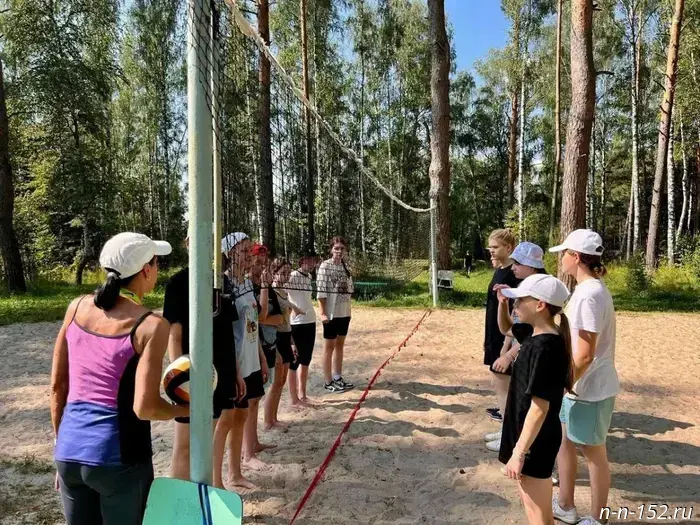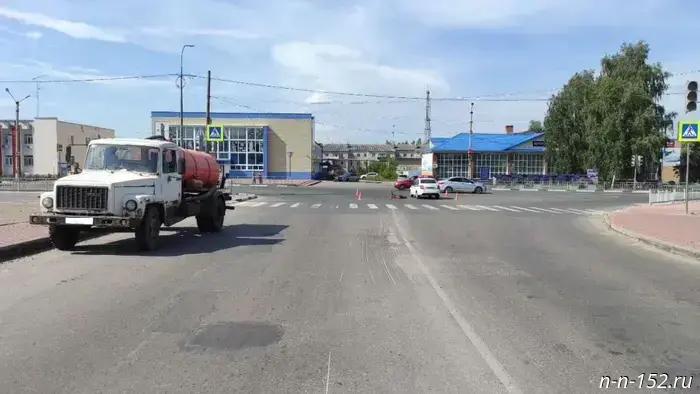Operational forecast of potential emergencies in the Nizhny Novgorod region for August 5, 2025.
Based on information from the Federal State Budgetary Institution "Upper Volga Hydrometeorological and Environmental Monitoring Agency," Upper Volga Basin Water Department, Federal Service for Oversight of Consumer Rights Protection and Human Wellbeing, Veterinary Committee of Nizhny Novgorod Region, Ministry of Energy and Housing and Communal Services of Nizhny Novgorod Region, the State Road Safety Inspection Department of the Main Directorate of the Ministry of Internal Affairs of Russia for Nizhny Novgorod Region, Ministry of Forestry and Wildlife Conservation of Nizhny Novgorod Region, and statistical data.
I. Justification of Operational Forecasts for the Past Period
The daily operational forecast for the past day was accurate by 88%.
II. Dynamics of Synoptic Processes
Weather conditions and forecast according to the Federal State Budgetary Institution "Upper Volga Hydrometeorological and Environmental Monitoring Agency":
Overview of hazardous hydrometeorological and agrometeorological phenomena:
- Yesterday, daytime air temperature was +28…+32°C, nighttime +15…+20°C. No precipitation. Moderate, locally weak wind.
- From 18:00 August 4 to 18:00 August 5, cloudy weather. Intermittent rains. Northeastern wind 5-10 m/s. Night temperature +15…+20°C, daytime +23…+28°C.
- From 18:00 August 5 to 18:00 August 6, partly cloudy with clearings. Short-term showers. Western, northwestern wind 5-10 m/s, gusts up to 13 m/s in places. Night +15…+20°C, day +23…+28°C.
- From 18:00 August 6 to 18:00 August 7, partly cloudy with clearings. Short-term showers in some areas. West, northwestern wind 5-10 m/s. Night +14…+19°C, day +23…+28°C.
Hazardous meteorological phenomena: not forecasted.
Adverse meteorological phenomena:
- Within 1-3 hours on August 4, 2025, heavy rains expected in parts of Nizhny Novgorod Region and Nizhny Novgorod city, persisting through August 5.
- From August 5 to 8, 2025, high (level 4) fire risk in forests and peat bogs in parts of Nizhny Novgorod Region.
III. Hydrological Situation
No emergencies registered.
Hydrological data for water bodies (regime of the Volga-Kama cascade reservoirs):
Considering hydrological and water management conditions in the Volga-Kama basin, and proposals by the Interagency Working Group on regulating reservoir operations (meeting on 09.07.2025 via videoconference), the following operation modes for cascade reservoirs are set from 11.07.2025 to 10.08.2025:
- Rybinsk Reservoir – ensuring the established operation mode of the Nizhny Novgorod hydropost.
- Based on the appeal from Rosmorrechflot dated 24.07.2025 № FSH-24/11534, and planned repair works at Gorodets Lock No. 16, as well as to reduce the number of vessels waiting at Gorodets locks, the scheduling for Nizhny Novgorod Hydroelectric Unit is:
- July 30 to August 10, 2025, with daily spillway discharge of approximately 1300±50 m³/s, maintaining water level in the upper pool at 83.6–84.0 mB.S., excluding wind effects.
- Cheboksarskaya Reservoir – maintaining the water level in the upper pool at 63.0–63.3 mB.S., excluding wind effects.
Operation modes are subject to immediate adjustment depending on hydrometeorological conditions and water situation.
As of August 4, Gorky Reservoir operates normally:
- Upper pool water level: 83.76 mB.S. (normal high water level (NHWL) – 84 mB.S., forced high water level (FHWL) – 85.5 mB.S.)
- Lower pool water level: 66.74 mB.S.
- Volume: 8.46 km³ (87% filled)
- Discharge: 1328 m³/s
- Inflow: 1425 m³/s
Changes over 24 hours (cm):
- On the rivers of the region: +5 to -4
- On the Volga near N. Novgorod (Chkalov staircase): +2 cm, level 64.10 mB.S.
IV. Forest Fire Situation
According to the Federal State Budgetary Institution "Upper Volga UGM", on 03.08.2025, fire hazard classes in the region are 2-3, localities experiencing 4 and 1 class.
Full 4th class fire hazard in the Krasnobakovsky Municipal District.
Partial 4th class in 13 municipalities including: Sarov, Bolshie Bolshedino, Varna, Voskresensk, Krasnooktyabrsky, Lukoyanovsky, Pochinkovsky, Semenovsky, Sechenovsky, Tonkinsky, Tonshaevsky, Urensky, Sharangsky.
Full 3rd class in 4 municipalities: Shakhunya, Vetluzhsky, Voznesensky, Gaginsky.
Partial 3rd class in 12 municipalities including Vyksa, Kulebaki, Borsky, Pervomaysky, Buturlinsky, Vorotynsky, Diveevsky, Koverkinsky, Lyskovo, Pilyninsky, Spassky, Shatoksky.
Full 2nd class in 7 municipalities: Dzerzhinsk, Chkalovsk, Balahninsky, Bolshemurashkinsky, Gorodetsky, Knyagininsky, Sergachsky.
Partial 2nd class in 10 municipalities: Arzamas, Nizhny Novgorod, Ardatovsky, Bogorodsky, Vadskiy, Volodarsky, Kstovsky, Navashinsky, Perevozsky, Sokolsky.
Full 1st class in 4 municipalities: Vachsky, Dalnekonstantinovsky, Pavlovsky, Sosnovsky.
Fire hazard levels per meteorological stations (from 06:00 Aug 3 to 06:00 Aug 4, mm of precipitation):
- Vетлуга: No precipitation, fire hazard level 3
- Shakhunya: No precipitation, level 3
- Krasnye Baki: No precipitation, level 4
- Voskresenskoye: No precipitation, level 4
- Semenov: No precipitation, level 3
- Gorodets: No precipitation, level 2
- Dzerzhinsk: No precipitation, level 2
- N. Novgorod (Priozhskiy district): No precipitation, level 1
- N. Novgorod (Avtozavodskiy district): No precipitation, level 2
- Lyskovo: No precipitation, level 2
- Pavlovo: No precipitation, level 1
- Vyksa: No precipitation, level 3
- Derevnya Konstantinovo: No precipitation, level 1
- Arzamas: No precipitation, level 1
- Sergach: No precipitation, level 2
- Lukoyanov: No precipitation, level 2
- Bolshoe Bolshedino: No precipitation, level 4
Decree of the Government of Nizhny Novgorod Region № 230 dated 01.04.2025 established a special fire prevention regime.
No natural fires registered in the past day.
Since the start of the fire hazard period, 36 natural fires occurred (previous year’s comparison: 39), including 34 forest and 2 peat bog fires. Burned area totals 64.07 ha (previous year: 119.736 ha), of which forest - 64.05 ha, peat - 0.02 ha.
Space Monitoring
No thermal anomalies registered over the past day. Previous year: 0.
Since the beginning of the year, 388 thermal anomalies recorded, of which 305 confirmed and 83 unconfirmed; previous year: 233, an increase of 66.5% (+155 anomalies).
V. Radiation-Hazardous and Environmental Situation
Radiation background in Arzamas city and district is 13 μR/h, consistent with natural background levels.
VI. Exogenic Geological Situation
Three exogenic and geological situations monitored by the Main Directorate of the Ministry of Emergency Situations of Russia for Nizhny Novgorod Region:
- Activation of landslides at Kstovsky district, Rabotki village, Volzhsky slope, houses 6–10 and Svobody street, house 2;
- Ground subsidence at the entrance of a residential building in Dzerzhinsk, Popova street, near house 28B;
- Karst sinkhole at Sosnovsky district, local road entrance to Ragozino village.
VII. Biological Hazards
Epidemiological situation:
Since March 3, 2025, weekly monitoring of tick bite reports has been in place.
As of July 25, 2025, 7,328 tick bite cases reported; 68 cases of tick-borne borreliosis.
As of July 17, 2025, 9,208 people vaccinated against tick-borne encephalitis; acaricidal treatments covered 4,483.96 hectares out of planned 4,361.79 hectares.
Epidemic animal health situation:
Restrictive measures (quarantine) for rabies introduced in several municipal areas, with 11 cases across 8 municipalities in 10 localities, involving rabies in foxes and dogs without direct contact with humans.
- Specific quarantine dates and affected animals listed in the original document.
African swine fever:
Quarantine established in Voskresensk district, Kalinikhha settlement, since July 15, 2025, involving pigs.
Anthrax:
Quarantine in Kekiino village, Vortinsky district, since July 23, 2025, with laboratory confirmation.
VIII. Utility and Power Supply Situation
No emergencies reported in the past day.
56 technical violations in utility sectors, including 55 accidents and 1 scheduled outage:
- Gas supply: 23 accidents
- Water supply: 21 accidents
- Power supply: 12 outages (11 accidents)
IX. Parameters of Emergency Forecasts
Forecast of emergencies due to hydrological sources:
Increased risk of incidents related to local flooding from storm drain and collector system failures, flooding of low-lying areas, roads, low-span bridges, power line supports, communication lines, and agricultural land (due to heavy rains).
Forest fire forecast:
According to the same source, fire hazard expected at levels 1–2, with some areas reaching 3–4 classes between August 5–7. No emergency forecasted, but high likelihood of fires due to grass, trash burning, thermal anomalies, and fire spread to residential and economic facilities, especially in 14 municipalities.
Sun activity and geomagnetic conditions:
Low UV index and minimal geomagnetic disturbances forecasted by Gismeteo portal.
Risks related to landslides:
Presence of landslide risks in Nizhny Novgorod city and surrounding districts, especially Vortynsky, Kstovsky, Krasnooktyabrsky, Lyskovsky, Borodinsky, Sosnovsky.
Biological hazard risk forecast:
Unlikely overall; potential for new cases of rabies and African swine fever, with certain territories identified as higher risk.
Electrical system accident forecast:
Likely above multi-year average levels (3–9), driven by heavy rains, cable damage, short circuits, and wire breakage, especially around Nizhny Novgorod and Pavlovo.
Utility disruption risk:
Generally low, but some areas—especially densely populated and critical facilities—may experience disruptions due to aging infrastructure or accidents.
Technogenic fire risk:
Continued probability (5–15 fires), mainly due to violation of fire safety rules, faulty heating, gas or electrical equipment, careless handling of fire, especially in urban areas like Nizhny Novgorod, Dzerzhinsk, Arzamas.
Explosion risk:
Due to household gas leaks at a similar level to past years, especially in densely populated areas.
Transport movement and traffic accident risks:
DUI and violation of traffic rules expected to cause higher accident rates (8–18 incidents on average), especially on federal and regional roads. Dangerous sections on M-7 "Volga" and R-158, R-177, M-12 highways are specified.
Rail, air, and water transport:
Minimal risk (0.1–0.2) forecasted for emergencies.
Seasonal risks:
Possibility of lost or trapped individuals, poisoning from wild plants, water accidents due to safety rule violations, and operation of small boats.
X. Recommendations for Response to Forecasts
- Emergency authorities and local governments to disseminate daily forecasts via municipal emergency operations centers and relevant agencies.
- Make decisions on precautionary measures based on forecast data, including staffing and resource allocation.
- Conduct preventive measures, ensure readiness for suspected emergencies considering forecasted meteorological hazards, and involve public alerts and media.
- Train and check the readiness of emergency response centers, critical infrastructure, and fire safety measures.
- Identify and engage vulnerable populations, conduct fire safety education, and enforce regulations.
- Establish and maintain communication channels, including public alert systems.
- Prepare for possible natural fires, landslides, technological incidents, and transport disruptions.
- Enhance awareness and adherence to safety rules among the population.
- Control utility infrastructures, replenishing stockpiles, servicing fire water sources, and monitoring structural integrity.
- Implement measures to prevent accidents on transport and during construction work, especially within landslide zones.
- Promote preventive work regarding wildlife and water safety, including patrols and public awareness campaigns.
- Use of mobile applications "EMERCOM of Russia" for information and safety guidance.
- Prepare in advance for weather-related risks like heavy rains:
- Mobilize response forces and resources,
- Conduct monitoring of flood-prone areas,
- Verify readiness of rescue and utility services,
- Clear drainage systems,
- Reschedule outdoor public events if necessary,
- Provide timely information to the public and tourists via media and official websites.
Другие Новости Нижнего (Н-Н-152)
 14-year-old from Nizhny Novgorod received 500,000 rubles for trampoline injury
14-year-old from Nizhny Novgorod received 500,000 rubles for trampoline injury
 The Nizhny Novgorod court detained deputy Artem Safiullin until September 25.
The Nizhny Novgorod court detained deputy Artem Safiullin until September 25.
 Nizhny Novgorod will bid farewell to artist Viktor Kondrashkin on August 6th.
In Nizhny Novgorod, thanks to the intervention of the prosecutor's office, compensation has been paid to the child injured on the attraction.
The Prosecutor's Office of the Moscow District of Nizhny Novgorod conducted an inspection of the enforcement of legislation on the protection of minors' life and health. August 5, 2025. Prosecutor's Office. Nizhny Novgorod Region. Nizhny Novgorod.
Nizhny Novgorod will bid farewell to artist Viktor Kondrashkin on August 6th.
In Nizhny Novgorod, thanks to the intervention of the prosecutor's office, compensation has been paid to the child injured on the attraction.
The Prosecutor's Office of the Moscow District of Nizhny Novgorod conducted an inspection of the enforcement of legislation on the protection of minors' life and health. August 5, 2025. Prosecutor's Office. Nizhny Novgorod Region. Nizhny Novgorod.
 Ostanina stated that deputies will oblige the government to submit a bill on children's recreation.
Ostanina stated that deputies will oblige the government to submit a bill on children's recreation.
 Septic tank cleaner fatally hit a scooter rider in Shatki
Septic tank cleaner fatally hit a scooter rider in Shatki
Operational forecast of potential emergencies in the Nizhny Novgorod region for August 5, 2025.
Prepared based on information from the Federal State Budgetary Institution "Upper Volga Hydrometeorological and Environmental Monitoring Department," Upper Volga Basin Water Department, August 5, 2025. Knyagininsky Municipal District. Nizhny Novgorod Region. Knyaginino.
